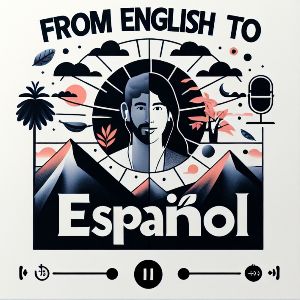Understanding the Conditional Tense in Spanish
March 31, 2025Categories: Spanish Language Tips, Lesson


From English to Español: Bridging the Grammar Gap with Alberto Rodriquez
Welcome to "From English to Español: Bridging the Grammar Gap", the podcast created specifically for English speakers ready to take their Spanish skills to the next level. Each episode dives into the core differences and surprising similarities between English and Spanish grammar, unraveling the complexities of the language in a way that’s clear, practical, and easy to follow. We'll break down essential concepts like verb conjugations, gendered nouns, and the tricky subjunctive mood, offering insights and tips that simplify these new rules and help you avoid common pitfalls. By comparing Spanish structures directly with English, you’ll quickly understand how to adapt what you already know into accurate, natural Spanish. Whether you’re a beginner or looking to brush up on advanced topics, this podcast is your comprehensive guide for bridging the gap between English and Spanish grammar, so you can speak and write with confidence. Join us daily for a new rule or concept, complete with practical examples, exercises, and memorable explanations that make learning Spanish engaging and enjoyable. Perfect for self-learners, students, and anyone serious about mastering Spanish grammar, "From English to Español" is your go-to resource for building fluency from the ground up.
Understanding the Conditional Tense in Spanish: Politeness and Hypotheticals
Learning a new language involves grasping the nuances of its grammar, and for English speakers studying Spanish, the conditional tense can be a fascinating area. Employed primarily to express politeness or hypothetical situations, the conditional tense in Spanish provides learners with a versatile tool for communication.
The Structure of the Conditional Tense
The conditional tense is typically formed by adding specific endings to the infinitive form of the verb. These endings are consistent across -ar, -er, and -ir verbs, making memorization slightly easier:
- Yo: -ía
- Tú: -ías
- Él/Ella/Usted: -ía
- Nosotros: -íamos
- Vosotros: -íais
- Ellos/Ellas/Ustedes: -ían
For example, with the verb hablar (to speak), the conditional tense would be:
- Yo hablaría (I would speak)
- Tú hablarías (You would speak)
- Él/Ella/Usted hablaría (He/She/You would speak)
- Nosotros hablaríamos (We would speak)
- Vosotros hablaríais (You all would speak)
- Ellos/Ellas/Ustedes hablarían (They/You all would speak)
Applications of the Conditional Tense
The conditional tense is not just about form. Its real beauty lies in its applications. It is mainly used in two contexts: expressing politeness and describing hypothetical situations.
Expressing Politeness
In Spanish, the conditional tense can soften requests or add a layer of courtesy. For instance, instead of saying, "¿Usted puede ayudarme?" (Can you help me?), using the conditional polite form "¿Usted podría ayudarme?" (Could you help me?) provides a softer, more respectful tone.
Hypothetical Situations
When speaking about events that are not guaranteed or are imagined scenarios, the conditional tense is the perfect choice. Consider contexts such as "If I won the lottery, I would travel the world." This becomes "Si ganara la lotería, viajaría por el mundo.".
Exceptions and Special Considerations
While the conditional tense is generally straightforward, some verbs have irregular stems that need to be memorized. Here are a few common examples:
- Hacer (to do/make) becomes har- (i.e., yo haría)
- Poder (to be able to) becomes podr- (i.e., yo podría)
- Tener (to have) becomes tendr- (i.e., yo tendría)
- Querer (to want) becomes querr- (i.e., yo querría)
Recognizing these stems is crucial because they affect the conjugation of these frequently used verbs.
Conclusion
Mastering the use of the conditional tense enriches one's ability to communicate with nuance and finesse in Spanish. Whether aiming to express hypothetical scenarios or convey requests politely, this tense is indispensable for both spoken and written conversations.
For more insights and structured learning, you can expand your knowledge by exploring resources at ScienceBasedLearning.com. Get Your Copy of the comprehensive guide to Spanish grammar today!
By understanding the conditional tense and its broader applications, learners can become more adept communicators in Spanish, ready to engage in complex scenarios with ease.